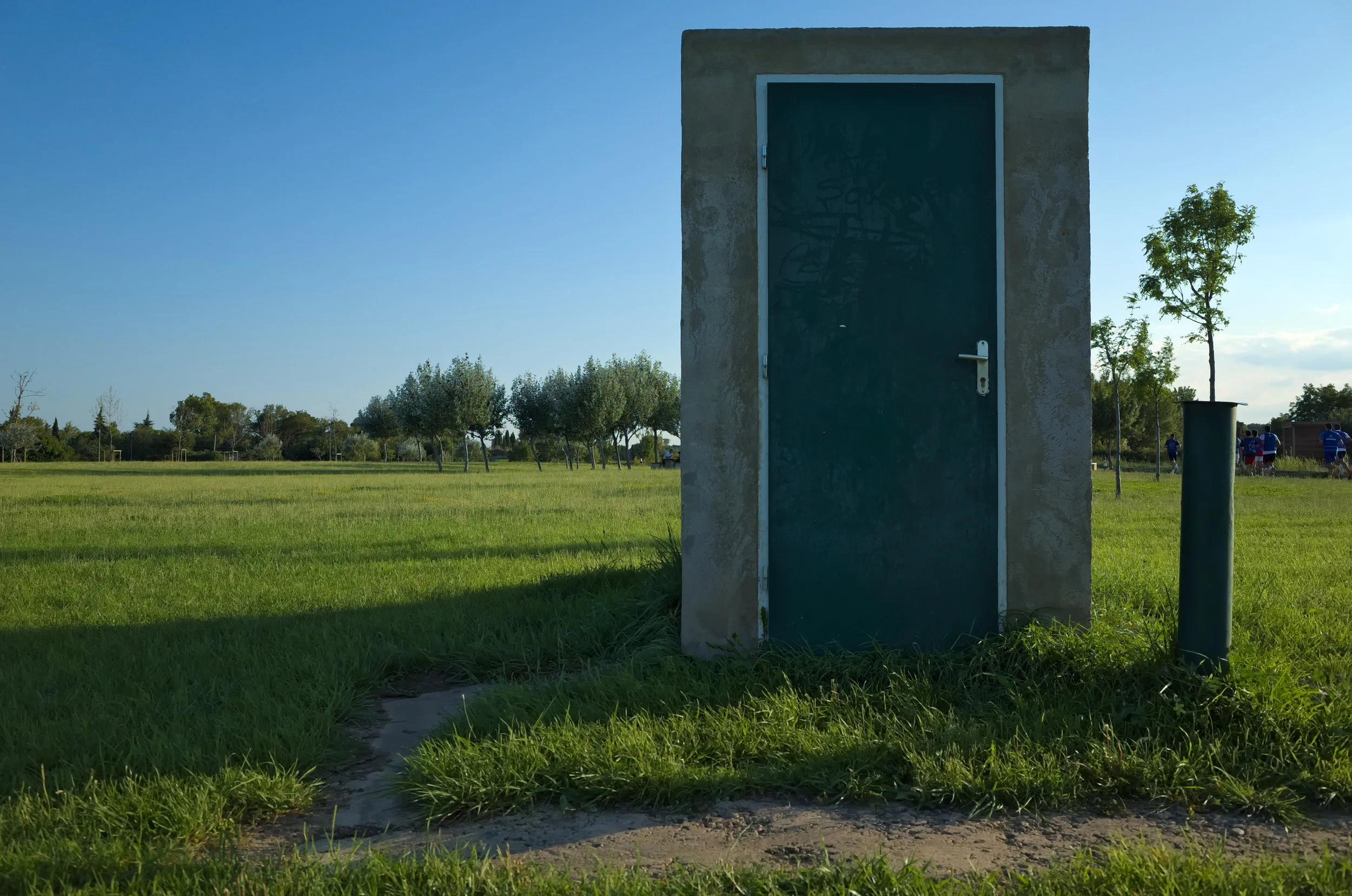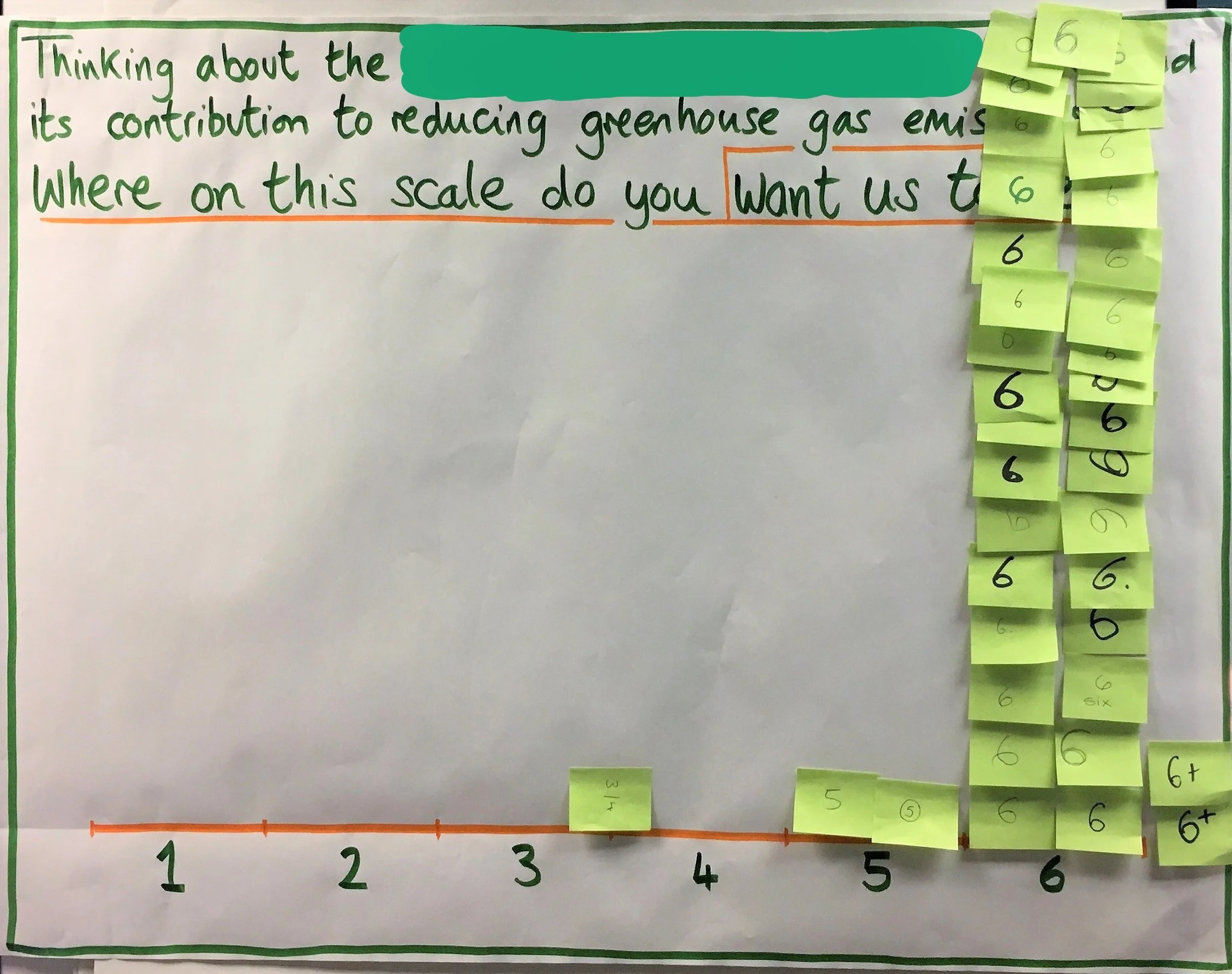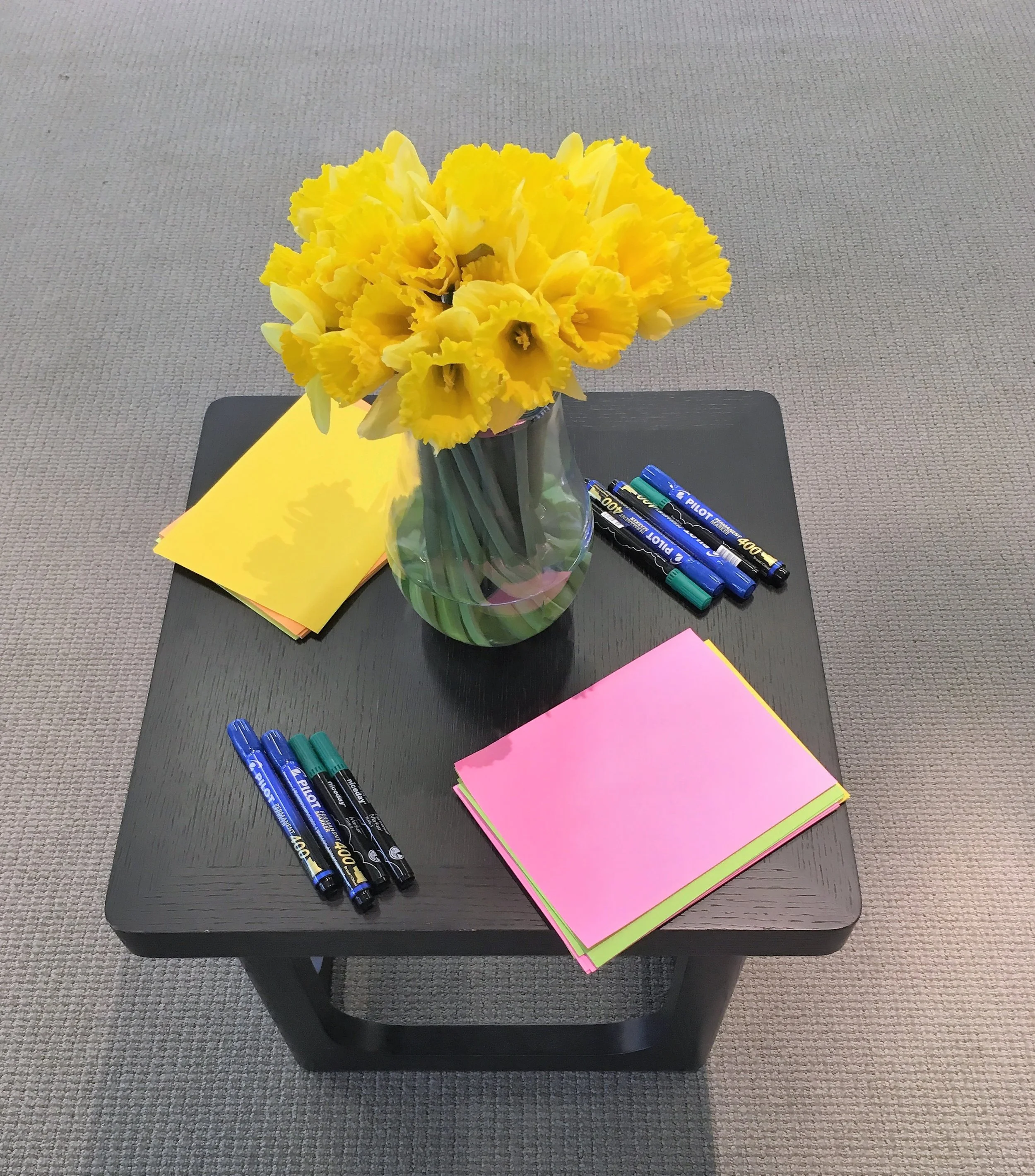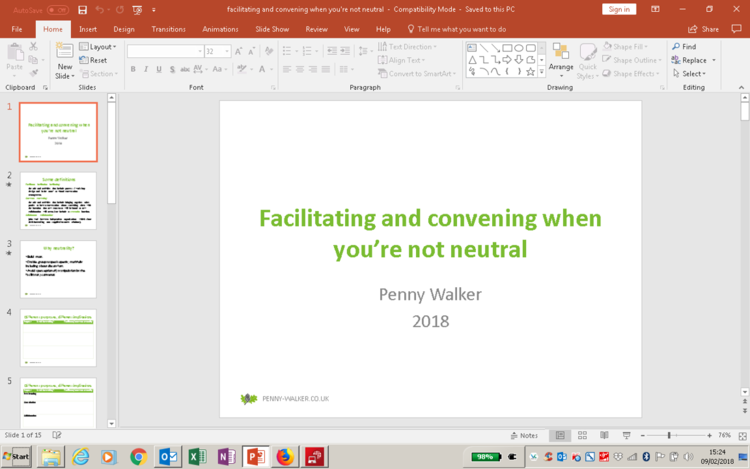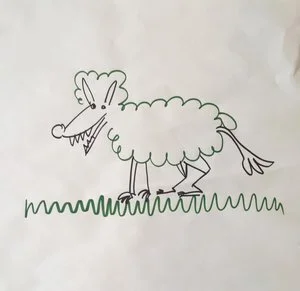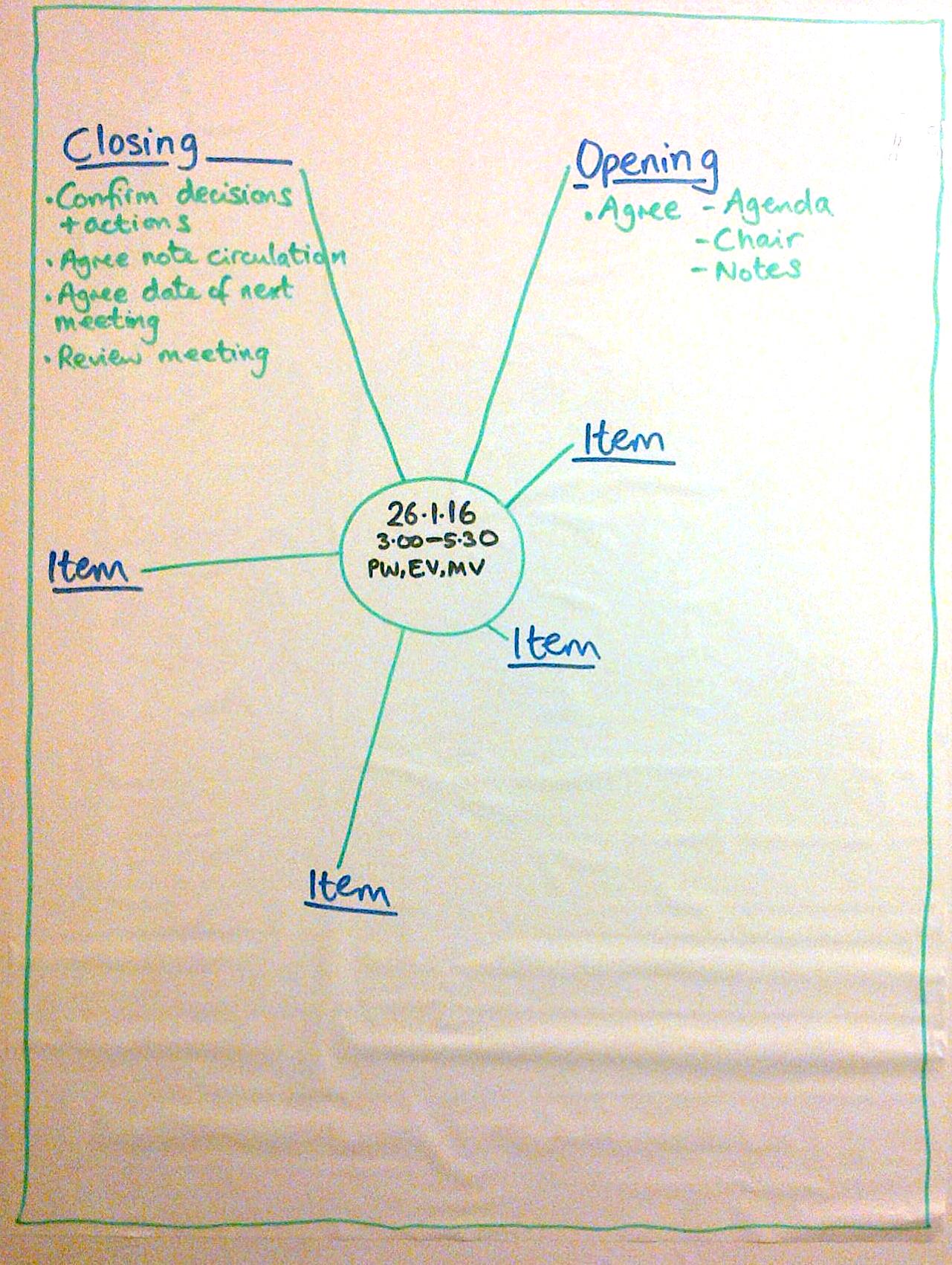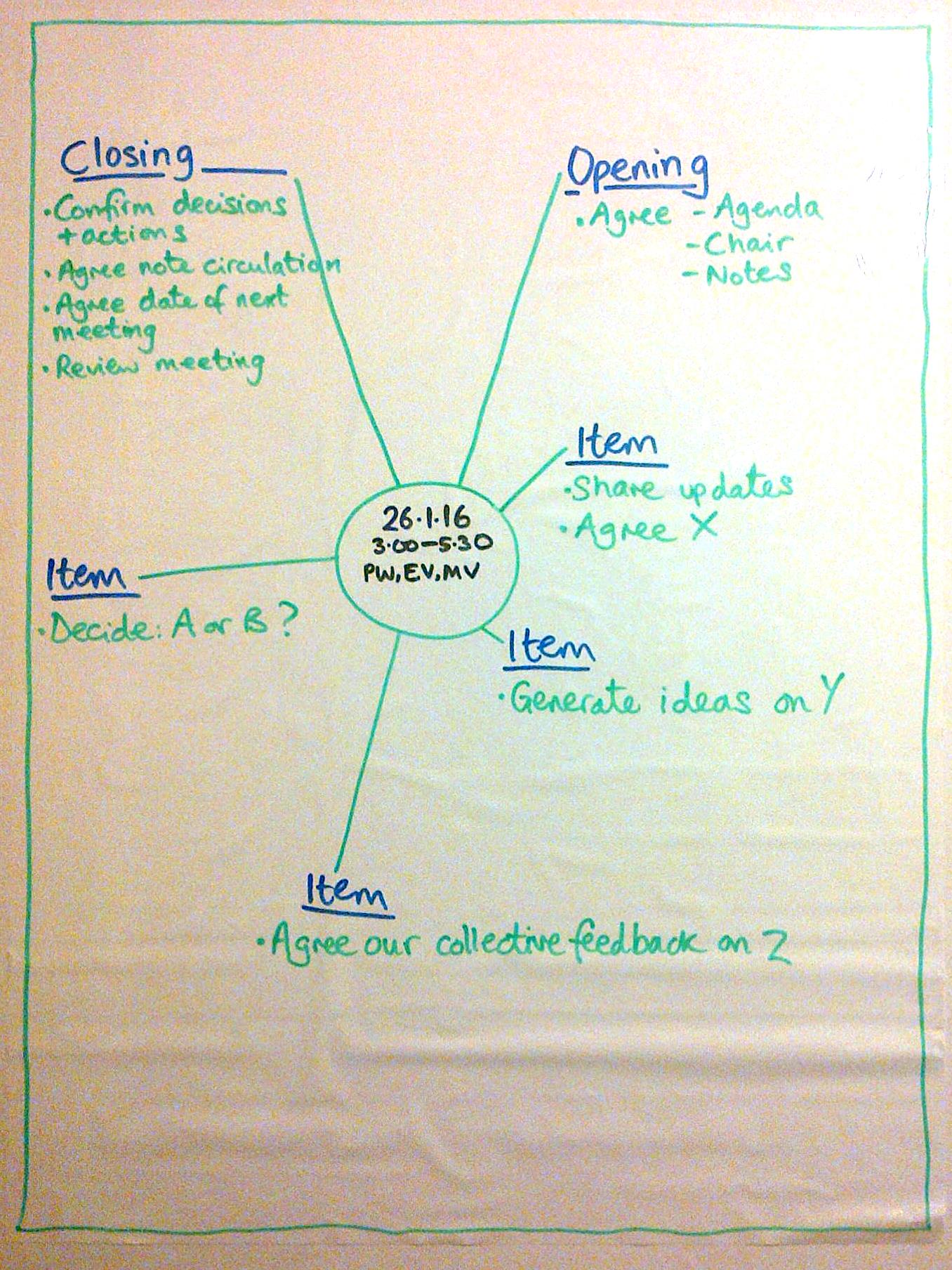This is a great way of getting a group moving, talking and learning more about each other, using questions which are related to the focus of the group or its agenda.
Brainstorming for introverts
Organising small groups within a larger event
There's a place for us... Choosing a venue
Instant bar charts: a safe snapshot of opinion
Inventing techniques and exercises
For your comfort and safety, webcasting is in use during this workshop
As a participation professional who’s been lurking around NHS Citizen as it develops, one of the most exciting aspects has been the webcasting. Even the debriefing team meeting at the end of the NHS Citizen Design Workshop in January this year (2015) was webcast. This is a level of openness and commitment to transparent reflection that goes way beyond anything I’ve been involved with before. I fell in love with NHS Citizen as I watched that.
On the other hand, when I was sitting down to design the detail of the particular event I was brought in to facilitate - the Citizens’ Jury test in Hatfield on 3rd and 4th March 2015 - I had some reservations.
Paying attention to the mood
When I first met with Brigid Finlayson and Carolina Karlstrom, to see whether we could work together to create the first She is Still Sustainable, we talked a lot about the kind of event we wanted to make it. And our conversation focused a lot on mood, atmosphere, emotional tone: we wanted it to be “warm, safe, friendly event which is refreshing, inspiring and supportive”.
On the spot, in the room
Any fool can design a workshop. What really tests you is having to redesign it part-way through.
You’ve done a great plan, and prepared your materials. You know how you’d like the space laid out, and your workshop will take the group on a journey towards a convergent, satisfying conclusion.
And then it all goes horribly wrong. Nasty surprises throw your plans into disarray. You need to redesign and you need to do it NOW!
Facilitating and convening when you're not neutral
Many organisations in the sustainability field do their best system-changing work when they are collaborating. And they find themselves in a challenging situation - playing the role of convening and facilitating, whilst also being a collaborator, with expertise and an opinion on what a good outcome would look like and how to get to it. This dual role causes problems. Here’s how to fix them.
In-house facilitation networks - what makes them work?
Inside some organisations, there are networks of facilitators who design and run better meetings. Perhaps you are in such a network, or have worked with people who are. Perhaps you've designed and run training for people who go on to be part of such a network. These are, for the most part, people who facilitate either as a part of their job (and are given management support and time within their job to do this) or on top of their day job (having to carve out time informally, and doing it because they love it). They are not generally full-time facilitators.
Keep it sheepy!
acilitators need to stay out of the content- which belongs to the group - and intervene only to improve process. (There's more on this here: the neutral facilitator.) But sometimes we get tempted to smuggle in our own views when we question or reflect back to the group.
Carousel in action
Campaigners, community groups, activists and faith groups - run your business meetings better so you can get on with the important stuff!
If you're involved in a local group - campaigners, activists, community action, faith group - there will be some really important things you want to achieve in the world. And you'll have some kind of team, committee, council or similar organising the activities behind the scenes. How are those meetings? Clear, engaging, effective? Or dull, interminable, frustrating, repetitive?
I've led a couple of two-hour training sessions this year for groups on how to run meetings which make clear decisions that stick. So that they can spend time on doing the stuff that really matters.
Here are the handouts from the workshop I ran in mid November.
If you think your group would benefit, get in touch to see what I can do to help you.
5 minute meeting makeover
We know it shouldn’t be like this, but sometimes we find ourselves in a meeting which is ill-defined, purposeless and chaotic.
Maybe it’s been called at short notice. Maybe everyone thought someone else was doing the thinking about the agenda and aims. Maybe the organisation has a culture of always being "too busy" to pay attention to planning meetings.
For whatever reason, you’re sitting there and the conversation has somehow begun without a structured beginning.
This is the moment to use the five minute meeting makeover!
Decisions? Decisions!
This blog post pulls together some resources that I shared at a workshop last week, for people in community organisations wanting to make clear decisions that stick. Groups of volunteers can't be 'managed' in the same that a team in an organisation is managed: consensus and willingness to agree in order to move forward are more precious. Sometimes, however, that means that decisions aren't clear or don't 'stick' - people come away with different understandings of the decision, or don't think a 'real' decision has been made (just a recommendation, or a nice conversation without a conclusion). And so it's hard to move things forward.
I flagged up a number of resources that I think groups like this will find useful:
- Descriptive agendas - that give people a much clearer idea of what to expect from a meeting;
- Using decision / action grids to record the outputs from a meeting unambiguously;
- Be clear about the decision-making method (e.g. will it be by consensus, by some voting and majority margin, or one person making the decision following consultation?) and criteria.
- Understanding who needs to be involved in the run-up to a decision.
- Taking time to explore options and their pros and cons before asking people to plump for a 'position'.
InterAct Networks - thank you for a wonderful ride
For over fifteen years, InterAct Networks worked to put stakeholder and public engagement at the heart of public sector decision-making, especially through focusing on capacity-building in the UK public sector. This work - through training and other ways of helping people learn, and through helping clients thinks about structures, policies and organisational change - helped organisations get better at strategically engaging with their stakeholders to understand their needs and preferences, get better informed, collaboratively design solutions and put them into practice. Much of that work has been with the Environment Agency, running the largest capacity-building programme of its kind.
History
InterAct Networks was registered as a Limited Liability Partnership in February 2002.
Founding partners Jeff Bishop, Lindsey Colbourne, Richard Harris and Lynn Wetenhall established InterAct Networks to support the development of 'local facilitator networks' of people wanting to develop facilitation skills from a range of organisations in a locality.
These geographically based networks enabled cross organisational learning and support. Networks were established across the UK, ranging from the Highlands and Islands to Surrey, Gwynedd to Gloucestershire. InterAct Networks provided the initial facilitation training to the networks, and supported them in establishing ongoing learning platforms. We also helped to network the networks, sharing resources and insights across the UK. Although some networks (e.g. Gwynedd) continue today, others found the lack of a 'lead' organisation meant that the network eventually lost direction.
In 2006, following a review of the effectiveness of the geographical networks, InterAct Networks began working with clients to build their organisational capacity to engage with stakeholders (including communities and the public) in decision making. This work included designing and delivering training (and other learning interventions), as well as setting up and supporting internal networks of engagement mentors and facilitators. We have since worked with the Countryside Council for Wales, the UK Sustainable Development Commission, Defra, DECC (via Sciencewise-ERC see p10), Natural England and primarily the Environment Agency in England and Wales.
Through our work with these organisations InterAct Networks led the field in:
diagnostics
guidance
tools and materials
new forms of organisational learning.
After Richard and Jeff left, Penny Walker joined Lindsey and Lynn as a partner in 2011, and InterAct Networks became limited company in 2012. In 2014, Lynn Wetenhall retired as a Director.
Some insights into building organisational capacity
Through our work with clients, especially the Environment Agency, we have learnt a lot about what works if you want to build an organisation's capacity to engage stakeholders and to collaborate. There is, of course, much more than can be summarised here. Here are just five key insights:
- Tailor the intervention to the part of the organisation you are working with.
- For strategic, conceptual 'content', classroom training can rarely do more than raise awareness.
- Use trainers who are practitioners.
- Begin with the change you want to see.
- Learning interventions are only a small part of building capacity.
Tailor the intervention
An organisation which wants to improve its engagement with stakeholders and the public in the development and delivery of public policy needs capacity at organisational, team and individual levels.
This diagram, originated by Jeff Bishop, shows a cross-organisational framework, helping you to understand the levels and their roles (vision and direction; process management; delivery). If capacity building remains in the process management and delivery zones, stakeholder and public engagement will be limited to pockets of good practice.
Classroom training will raise awareness of tools
There are half a dozen brilliant tools, frameworks and concepts which are enormously helpful in planning and delivering stakeholder and public engagement. Classroom training (and online self-guided learning) can do the job of raising awareness of these. But translating knowledge into lived practice - which is the goal - needs ongoing on-the-job interventions like mentoring, team learning or action learning sets. Modelling by someone who knows how to use the tools, support in using them - however inexpertly at first - and reinforcement of their usefulness. Reflection on how they were used and the impact they had.
Use trainers who are practitioners
People who are experienced and skillful in planning and delivering stakeholder and public engagement, and who are also experienced and skillful in designing and delivering learning interventions, make absolutely the best capacity-builders. They have credibility and a wealth of examples, they understand why the frameworks or skills which are being taught are so powerful. They understand from practice how they can be flexed and when it's a bad idea to move away from the ideal. We were enormously privileged to have a great team of practitioner-trainers to work with as part of the wider InterAct Networks family.
Begin with the change you want to see
The way to identify the "learning intervention" needed, is to begin by asking "what does the organisation need to do differently, or more of, to achieve its goals?", focusing on whatever the key challenge is that the capacity building needs to address. Once that is clear (and it may take a 'commissioning group' or quite a lot of participative research to answer that question), ask "what do (which) people need to do differently, or more of?". Having identified a target group of people, and the improvements they need to make, ask "what do these people need to learn (knowledge, skills) in order to make those improvements?". At this stage, it's also useful to ask what else they need to help them make the improvements (permission, budget, resources, changes to policies etc). Finally, ask "what are the most effective learning interventions to build that knowledge and those skills for these people?". Classroom training is only one solution, and often not the best one.
Learning interventions are (only) part of the story
Sometimes the capacity that needs building is skills and knowledge - things you can learn. So learning interventions (training, coaching, mentoring etc) are appropriate responses. Sometimes the capacity "gap" is about incentives, policies, processes or less tangible cultural things. In which case other interventions will be needed. The change journey needs exquisite awareness of what 'good' looks like, what people are doing and the impact it's having, what the progress and stuckness is. Being able to share observations and insights as a team (made up of both clients and consultants) is invaluable.
The most useful concepts and frameworks
Over the years, some concepts and frameworks emerged as the most useful in helping people to see stakeholder engagement, collaboration and participation in a new light and turn that enlightenment into a practical approach.
I've blogged about some of these elsewhere on this site: follow the links.
- What's up for grabs? What's fixed, open or negotiable.
- Asking questions in order to uncover latent consensus - the PIN concept.
- How much engagement? Depending on the context for your decision, project or programme, different intensities of engagement are appropriate. This tool helps you decide.
- Is collaboration appropriate for this desired outcome? This matrix takes the 'outcome' that you want to achieve as a starting point, and helps you see whether collaborating with others will help you achieve it.
- Engagement aims: transmit, receive and collaborate. Sometimes known as the Public Engagement Triangle, this way of understanding "engagement aims" was developed originally by Lindsey Colbourne as part of her work with the Sciencewise-ERC, for the Science for All Follow Up Group.
- Who shall we engage and how intensely? (stakeholder identification and mapping)
Three-day facilitation training
As part of this wider suite of strategic and skills-based capacity building, InterAct Networks ran dozens of three-day facilitation skills training courses and helped the Environment Agency to set up an internal facilitator network so that quasi-third parties can facilitate meetings as part of public and stakeholder engagement. The facilitator network often works with external independent facilitators, contracted by the Environment Agency for bigger, more complex or higher-conflict work. This facilitation course is now under the stewardship of 3KQ.
More reports and resources
Here are some other reports and resources developed by the InterAct Networks team, sometimes while wearing other hats.
Evaluation of the use of Working with Others - Building Trust for the Shaldon Flood Risk Project, Straw E. and Colbourne, L., March 2009.
Departmental Dialogue Index - developed by Lindsey Colbourne for Sciencewise.
Doing an organisational stocktake.
Organisational Learning and Change for Public Engagement, Colbourne, L., 2010, for NCCPE and The Science for All group, as part of The Department of Business, Innovation and Skills (BIS)’ Science and Society programme.
Mainstreaming collaboration with communities and stakeholders for FCERM, Colbourne, L., 2009 for Defra and the Environment Agency.
Thank you for a wonderful ride
In 2015, Lindsey and Penny decided to close the company, in order to pursue other interests. Lindsey's amazing art work can be seen here. Penny continues to help clients get better at stakeholder engagement, including through being an Associate of 3KQ, which has taken ownership of the core facilitation training course that InterAct Networks developed and has honed over the years. The Environment Agency continues to espouse its "Working with Others" approach, with great guidance and passion from Dr. Cath Brooks and others. Colleagues and collaborators in the work with the Environment Agency included Involve and Collingwood Environmental Planning, as well as Helena Poldervaart who led on a range of Effective Conversations courses. We hope that we have left a legacy of hundreds of people who understand and are committed to asking great questions and listening really well to the communities and interests they serve, for the good of us all.
Facilitation and justice
I’m going to be thinking a lot about justice over the next few months, as it’s this quarter's theme at the weekly meeting of like-minded locals that I go to, at Newington Green's Unitarian chapel New Unity.
Today, we heard an extract from a sermon by Unitarian minister Theodore Parker, which was picked up in later years by Martin Luther King Jr and Barack Obama.
“I do not pretend to understand the moral universe; the arc is a long one, my eye reaches but little ways; I cannot calculate the curve and complete the figure by the experience of sight, I can divine it by conscience. And from what I see I am sure it bends towards justice.”
And we reflected on what we can each do, to move us further along that arc. More words from religious sources, this time in the Jewish tradition (Rabbi Tarfon):
"It is not incumbent upon you to complete the work [of perfecting the world], but neither are you at liberty to desist from it"
What does this mean for facilitators?
What is the justice that we can seek to advance, in our work?
When the content is 'just', or not
We may choose, or be lucky enough, to work with groups whose content concerns what we consider to be justice. Whether this is structural and social justice, questions of inter-generational justice of the kind that climate change throws up; or justice in the realm of victims and perpetrators and the criminal law; or justice as right relationship and fair dealings between people in dispute with each other.
Or we may find ourselves in the uncomfortable position of helping groups get better at doing something we don’t entirely agree with – their ideas about fairness and right action may be different to ours. We may be faced with hard choices at this point – time to remember our mandate! Did we come to the group to serve it as its facilitator, or were we contracted for some other role (mediator, arbitrator, content expert, trainer...)?
But in this post I’m interested in how ‘justice’ manifests in our process, as content-neutral facilitators.
'Just' process
There’s justice as fairness / equality, and there’s justice as getting some kind of outcome that is considered to be ‘deserved’.
And when we look at equality, there’s equality of opportunity and equality of outcome. And when we look at inequality, there’s systemic or structural inequality (manifested as patterns of unequal outcome for e.g. women, people of colour or marginalised ethnicity, people with disabilities, people with non-straight, non-cis sexuality and gender, people with fewer resources or unfavoured class status) as well as what might be going on in the room, in individual conversations and transactions.
I’d argue that underpinning our entire profession is the assumption that it is better (more just) for people’s truth to be heard than not.
A few aspects came immediately to mind: the opportunity to have your say and be listened to with respect; power balancing so that those who are habitually dominant are not privileged in the conversation; ground rules or working agreements which reinforce a culture of openness and listening; reflecting back to the group when individuals or types of individual are being heard more or less than others.
Gently stretching our mandate
I think there are some greyer areas, where we can gently exercise our mandate more actively in pursuit of ‘justice’.
Asking the client about the values or principles which they want to see manifested in the conversation and conclusions might prompt them to consider the subject matter through a lens that might otherwise remain unused.
Asking for clarity on the rationale for who gets invited to be part of the conversation, and whether the rationale has been applied objectively, can help to bring in marginalised voices. I write more about stakeholder identification and mapping here.
Setting aside time in the agenda or process for the group to explicitly consider its criteria for decisions gives an opportunity for assumptions to be shared and questioned, including assumptions about whose interests need to be considered. Helping the group to understand the different decision-making methods (single decision-maker, majority decisions, vetoes, consensus) before they agree which to use brings unspoken assumptions about fairness and power to conscious attention. There’s more on that here.
Knowing our own prejudices
We need to be very aware of our own prejudices: who do we marginalise, dismiss or consider to be 'other'? Where might we over-compensate, and swing the pendulum too far? When do we judge the conversation and the points being made, according to our own (flawed, personal, partial) standards of justice?
Working in teams, especially diverse teams, can help us see our own blind spots.
The morning after the night before - debriefing events
A lot of projects have been completed in the last couple of weeks, so I've been encouraging clients to have debriefing conversations.
Although I always include some kind of debrief in my costings, not all clients find the time to take up this opportunity. That's such a shame! We can learn something about how to bring people together to have better conversations, every time we do it.
Structuring the debrief
I've been using a simple three question structure:
- What went well?
- What went less well?
- What would you do differently, or more of, next time?
This works in face to face debriefing, telecons and can even form a useful way of prompting a debriefing conversation that takes place in writing: in some kind of joint cyberplace, or by email.
If we haven't already had a conversation about immediate next steps, then I'll add this fourth question:
- What do we need to do next?
Referring back to the aims
Since, for me, the aims are the starting point for the design process, they should also be the starting point for the debriefing conversation. To what extent did we meet our aims? What else might the client team need to do in next weeks and months, to get closer to meeting the aims?
Evidence to draw on
It's really helpful for the team to have access to whatever the participants have fed back about how the process or event worked for them. Sometimes we use paper feedback forms in the room, sometimes an electronic survey after the event. Quantitative and qualitative reports based on this feedback can help people compare their intuitive judgements against what participants have said.
In other situations, we make time in the process for participants to have their own conversation about how things have gone. A favourite technique is to post up a flip with an evaluation question like "to what extent did we meet our aims?". The scale is drawn on, and labelled "not at all" to "completely". Participants use dots to show their response to the question, and then we discuss the result. I often also post up flips headed "what helped?" and "what got in the way?". People can write their responses directly on to the flips. This is particularly useful when a group will be meeting together again, and can take more and more responsibility for reflecting on and improving its ways of working effectively.
What's been learnt?
Some of the unexpected things to have come out of recent debriefs:
- The things that actually get done may be more important than the stated aims: one workshop only partially met its explicit aims to develop consensus on topic X, but exceeded client expectations in building better working relationships, making it easier to talk later about topic Y.
- What people write in their questionnaire responses can be quite different to the things you heard from one or two louder voices on the day.
- A debriefing conversation can be a good way of briefing a new team member.
And the obvious can be reinforced too: clarity on aims really helps, thinking about preparation and giving people time to prepare really helps, allowing and enabling participation really helps, good food really helps!
Magic whiteboard - you never forget your first time
So first of all I have to get this off my chest: a big GRRRRR! to venues which don't let you post up paper using blu-tack or white tack. Especially those which don’t have alternatives like exhibition boards freely available. You are making it much harder for me to provide a service.
Too often, as facilitators, we don't get the choice to avoid using venues like this because the client hasn't involved us early enough in conversations about what kind of venue is suitable. There's more on venues here.
But, a couple of weeks ago, this annoying situation meant that I got to use magic whiteboard for the first time.
Magic!
In case you're not familiar with magic whiteboard... it is thin, flexible sheets of plastic - think 'plastic paper' - that come on a perforated roll like giant, unabsorbent loo paper. You tear off a sheet and place it against a flat, smooth wall. And it stays there, adhering through the magic (physics) of static electricity. You can write on it with whiteboard pens, and wipe them off to reuse the sheets. You can also stick paper on, again using the power of static.
Practicing and preparing
This was a big, important workshop for a high-profile client, so I wanted everything to go without a hitch. So I practiced ahead of time in my office.
I wanted to find out how long the sheets would stay up. The answer is, two weeks and counting. Will it also stay up reliably with paper clinging on? Yes for A4 sheets and post-its, not with flip chart paper.
I wondered how well the ink would show up. I practiced with a couple of types of whiteboard pen, and found Pilot's Wyteboard Board Master are bright and dark enough. (Added bonus - you can get refills for the ink. See here for other adventures in refilling pens.) Other kinds of pen were clearly too pale to be of any use.
I wondered if I could prepare complex graphics and instructions ahead of time, and bring them with me. I do this regularly for workshops, to save time on the day. But no, the ink smudges when the sheets are rolled or folder. Unsurprising, as part of the point of whiteboard pens is that they can be cleaned off the surface. I may test this again with permanent markers, if the need arises.
How did it work?
In short, very well!
The magic whiteboard was used for a large 'wall' for the open space space / time grid. We had three time slots and thirteen spaces. Two rows of seven sheets were hung portrait style, with session times and space labels written on paper and stuck on. Over the course of the organising plenary, proposals for sessions, written on A4 paper, were added. Then people came and signed up to sessions, and the paper and magic whiteboard sheets clung to the wall without any hint of falling down.
So yes, I'm hanging on to the rest of the roll, and will be using it again if I need to.



